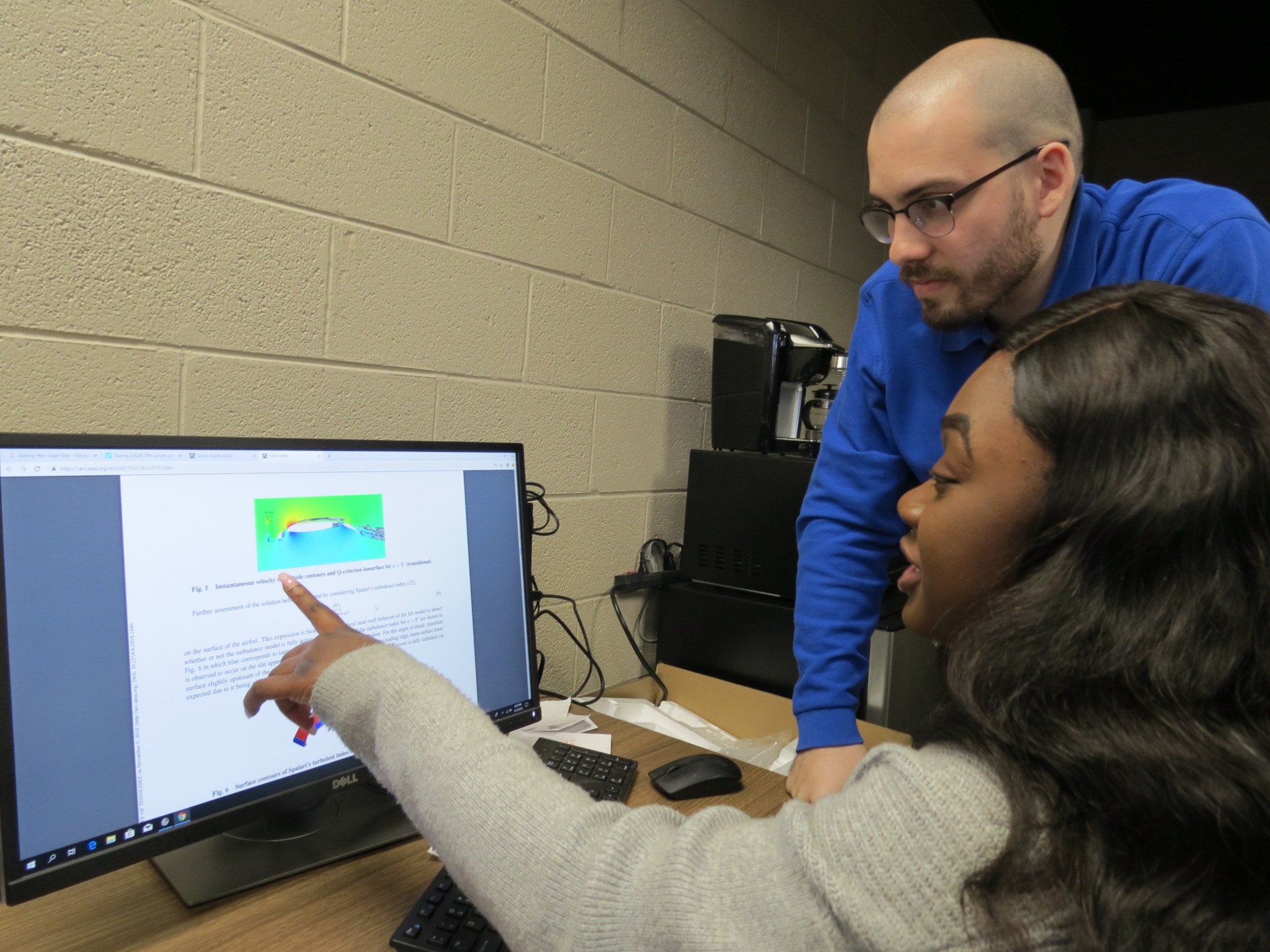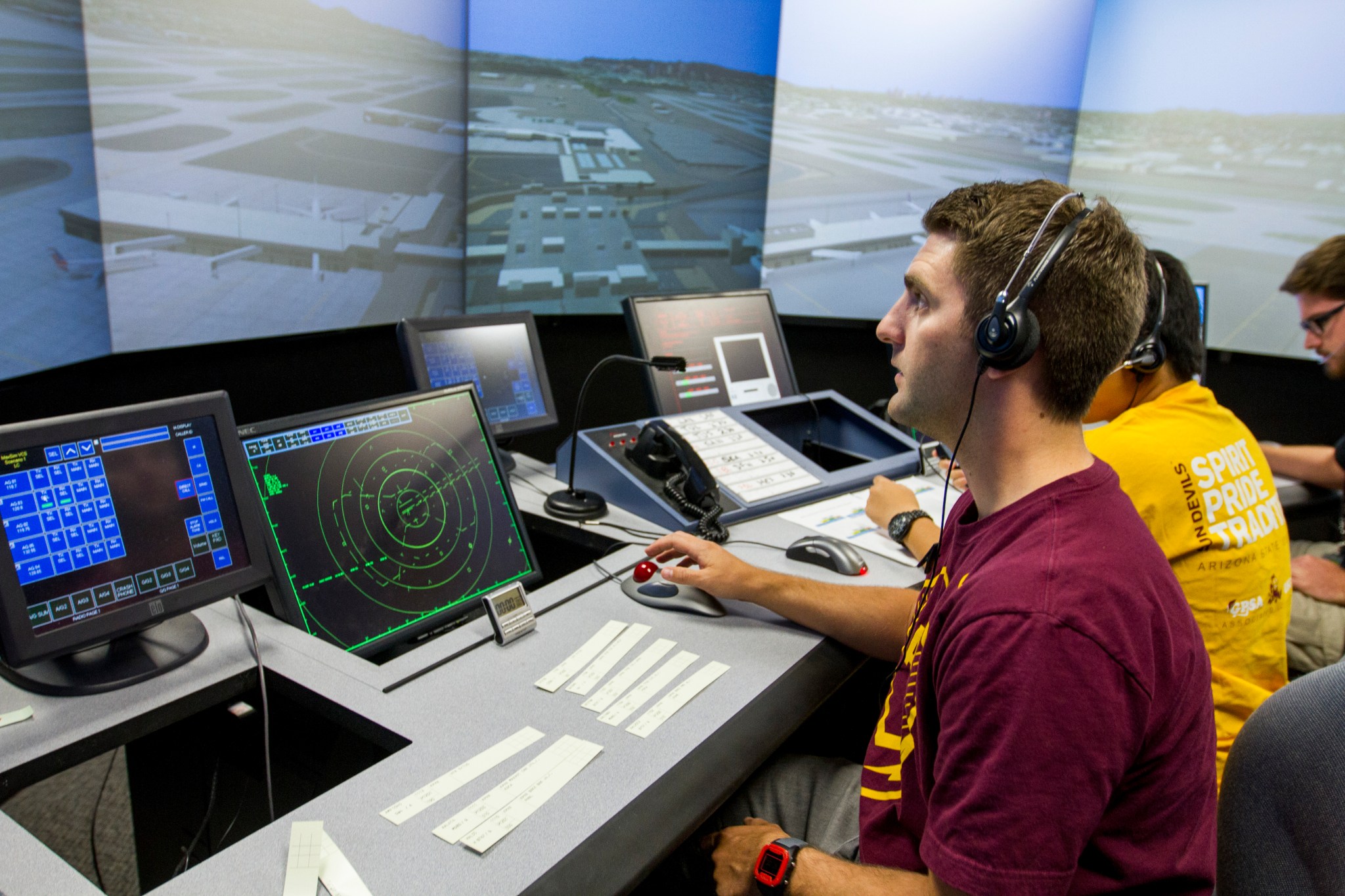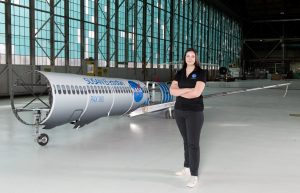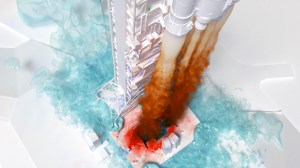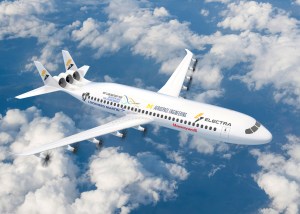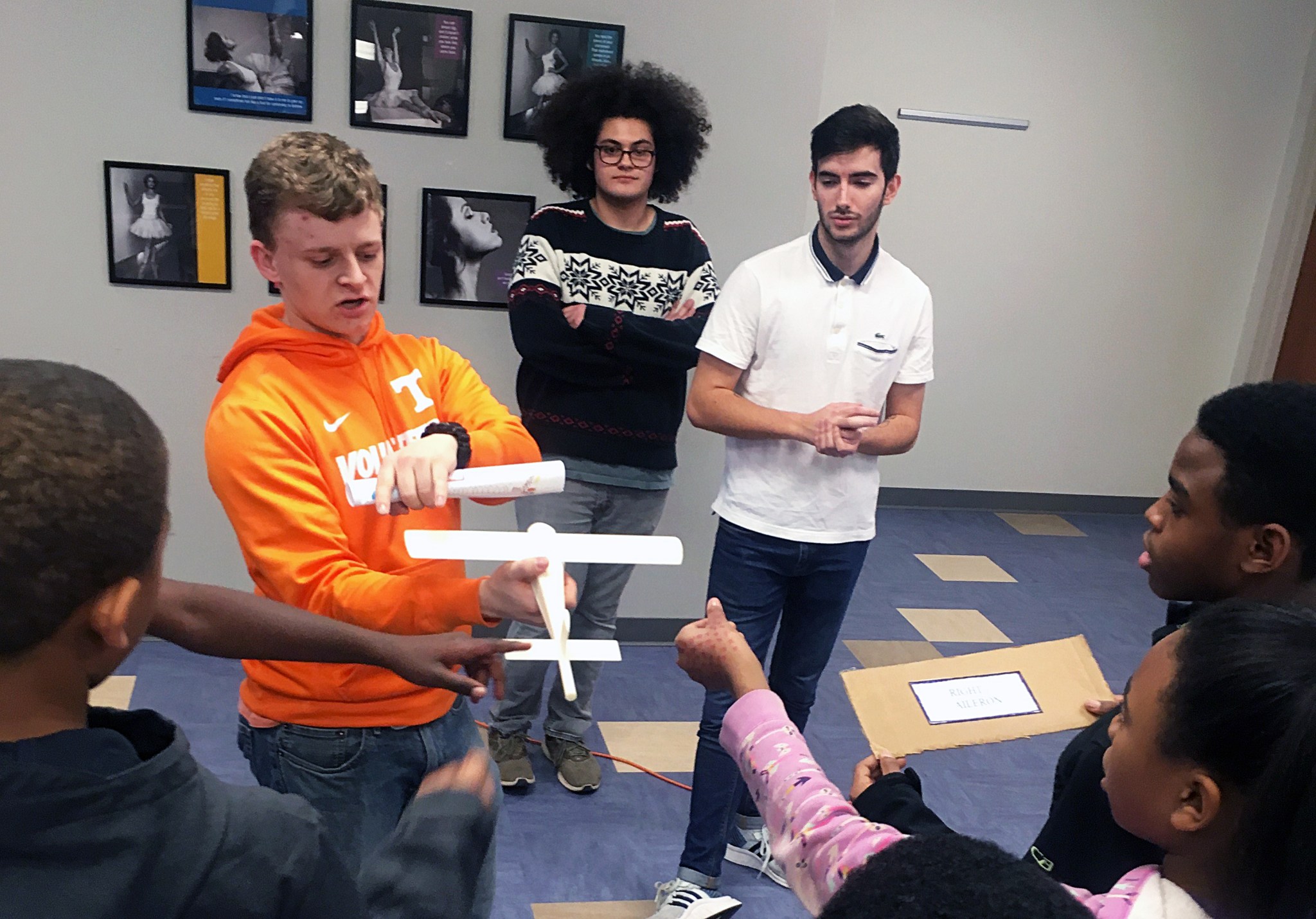
NASA-sponsored student research has never looked quite like this – and the whole idea is working “great.”
Begun in 2017, NASA Aeronautics’ University Leadership Initiative (ULI) sought to shake up the usual student research paradigm with an innovative approach that asks colleges to propose what they want to work on to help NASA achieve its goals, instead of the other way around.
Moreover, instead of a single university conducting NASA-funded research within its own walls – which is a more typical feature of government/academic partnerships – ULI requires schools to take a leadership role and collaborate with other academic and industry partners to take advantage of their multi-disciplinary expertise.
University faculty working with students on their ULI projects say they appreciate this new approach by NASA, which gives students a practical view of what many of them will be doing after they graduate.
“This is a very unique training opportunity for the next generation of engineers because they actually see how a real-world problem is cast, formulated, solved and implemented,” said Yongming Liu, a professor in Mechanical and Aerospace Engineering at Arizona State University (ASU) in Tempe.
ASU was one of five lead schools selected in 2017 for the inaugural round of research funded by NASA through ULI. Their research involves finding new ways to safely integrate complex sets of data sources that will aid in identifying and mitigating potential problems in the air before they happen.
And, according to Liu, while meeting their goals is a big challenge, success hinges on the ability of these student researchers to form and work with teams that have a wide range of technical experience and knowledge.
In fact, the emphasis by NASA in “how” the research is done is just as important, if not more so, than “what” the research is all about in the first place.
“It’s true. A major aspect of ULI is our desire that students experience the process of learning to work together, manage teams and do this research in an environment that is as close to the real world as possible,” said Koushik Datta, NASA’s ULI project manager.
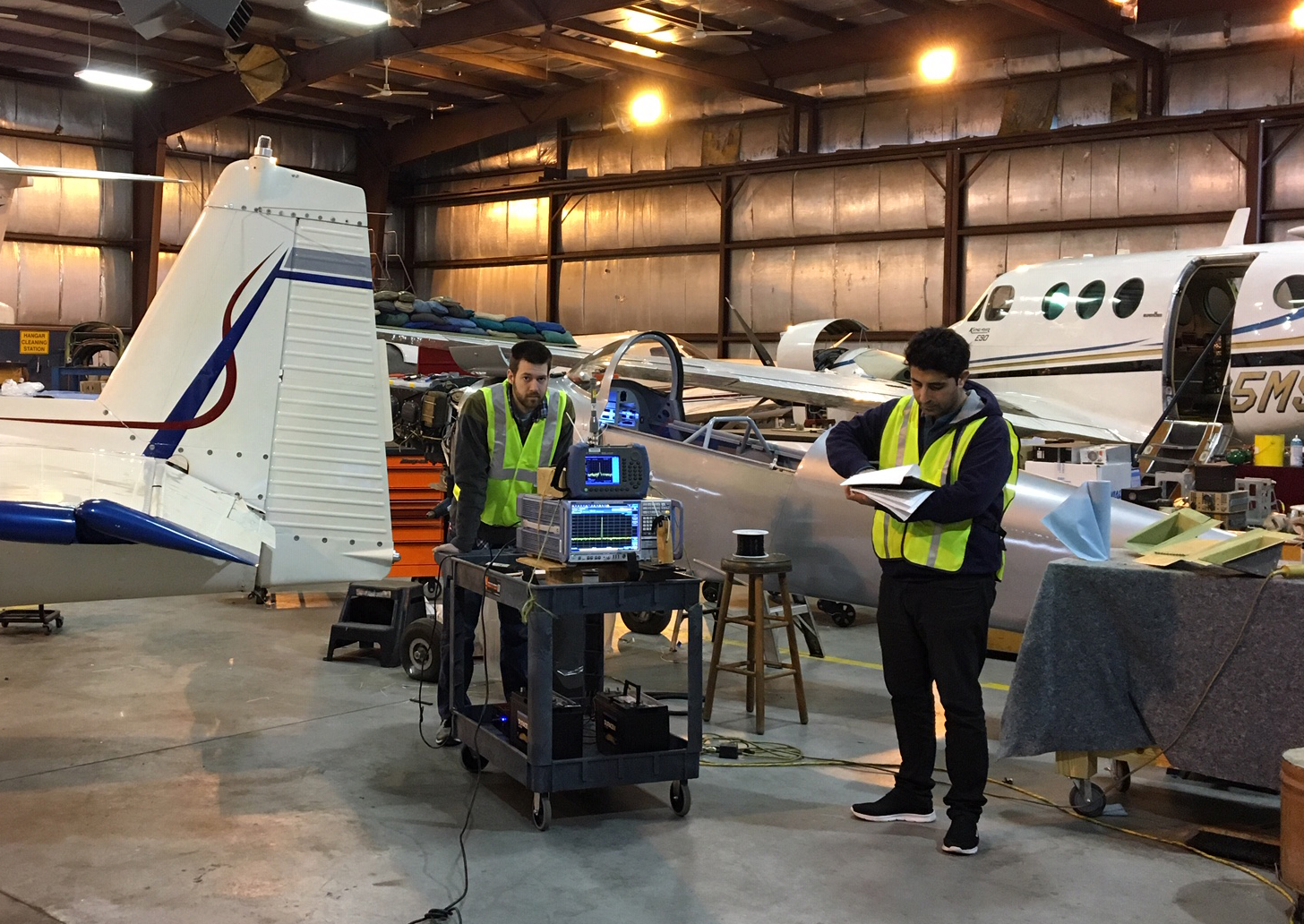
Tech Matters
Of course, ULI wouldn’t exist without NASA Aeronautics’ charge to solve the problems of flight – the current goal being to marshal every resource possible that can aid in opening a new era of 21st century passenger and cargo air travel, no matter the size and type of aircraft flown or airspace used.
To that end, NASA has developed a strategic plan that clearly lays out six major areas of aeronautics research that together will enable – for example – a future in which commercial supersonic airliners fly over land, aircraft are powered by electric propulsion, and drones safely navigate within cities delivering cargo or taxiing people.
Typically, as specific research opportunities arise, NASA will announce those, detailing exactly what needs to be done and when, and then interested parties will follow a formal procurement process that eventually brings a selected company or institution onboard to begin work.
“But with ULI we are looking very specifically to the academic community and asking them to survey our research goals, consider what areas they could provide us with complementary help, and then make a proposal to us for them to do that work,” Datta said.
The technical areas the first round of selected schools are working on range from designing wings for a supersonic aircraft that can change their shape as needed in flight to reduce the loudness of a sonic boom, to contemplating a Boeing 737-sized airliner that can take off and fly with a quiet, energy-efficient electric propulsion system.
“I think ULI has been revolutionary in a good way. This is an opportunity that universities haven’t really been able to experience,” said Jim Coder, an assistant professor in the Mechanical, Aerospace and Biomedical Engineering department at the University of Tennessee in Knoxville.
The Tennessee school is leading a team that is working on designing an ultra-efficient, slotted aerodynamic wing that could help facilitate the goal of reducing the aviation community’s use of fuel by 70 percent compared to typical airliners flown during 2005.
The idea of using a slotted wing is not a new idea, but modern design and analysis tools are being used to study it as a potential solution that will achieve the goal, Coder said, noting that another benefit of ULI is NASA’s willingness to let the schools investigate something that isn’t necessarily a sure thing.
“We have some great technology development capability that enables us to take a little more risk with our research. This lets the universities be in the driver seat and explore these new concepts that wouldn’t otherwise have a chance of being matured,” Coder said.
For NASA’s aeronautical innovators who are dedicated to the ideals of student education and workforce development, ULI is working as hoped.
“Overall we’re very impressed with what’s happening. Not only are we seeing innovation on the technical side, but also in the way in which they are building these teams to deliver the product. It’s just been great,” said John Cavolowsky, NASA’s director of the Transformative Aeronautics Concepts Program, which is home to the ULI project.
Rare Chance
More than a year after NASA made its first round of research awards under the ULI project, 22 universities, nearly 50 faculty members and more than 130 students – some of them still in high school – are involved in the project.
With that many young minds approaching the technical challenges each school signed up to tackle, a lot of new ideas and fresh approaches to problem-solving are getting some attention not only from NASA but industry as well.
Case in point: the ULI team led by the University of South Carolina (USC) in Columbia.
USC is looking into employing new hardware and software to make possible advanced, wireless communication networks to enhance the safety and efficiency of air traffic management with both piloted aircraft and drones.
“Our hope is to improve communications and networking across the entire aviation community. From larger passenger aircraft to small unmanned vehicles during take-off, cruise and landing, and across all airport surface areas,” said David Matolak, a USC electrical engineering professor.
Since they started in 2017, the team has written a concept of operations for the technology they think will meet their goals, as well as a report evaluating what current and future communication technologies might be available.
They’ve also been busy developing and field-testing initial designs for a radio that can be adapted for different uses depending on what software is loaded inside, and that work has opened the door for a rare opportunity.
An engineer with Boeing is a member of a peer-review team that meets from time to time to examine the progress of USC’s efforts related to ULI. Upon seeing the progress made with this new communications concept, he is helping facilitate the inclusion of USC’s experimental radio on a future flight test involving a Boeing aircraft.
“I never expected to be doing this,” Matolak said of the opportunity.
“It’s one thing to do computer simulations, publish a paper and do lab experiments – or even take it outside to do a little demo in the parking lot with a small drone. But getting involved in a Boeing flight test? That’s a pretty big deal,” Matolak said.
NASA’s Datta agrees.
“The expectation of getting a highlight like that after such a short time isn’t very high. It’s unusual, for sure. But we’re excited the students at USC and their partners are getting this opportunity, which truly will give them a demonstration of real-world research,” Datta said.
Bright Futures
Looking ahead, NASA officials say they have every intention of continuing ULI.
“It’s been great – in fact better than my expectations,” Datta said.
A second round of universities selected to join ULI was just announced, and a notice announcing an opportunity to submit proposals for a third round of selections was just posted.
“There’s still much more we want to do with ULI, and there’re always things we can do to improve how we operate and increase participation,” Datta said.
Of particular interest is to see proposals come in from university departments not traditionally associated with aviation.
“We’re already seeing that the future of air travel is going to rely more and more on the convergence of technical fields that aren’t usually taught as part of an aerospace curriculum,” Datta said, noting autonomy is a particularly good example.
And while they expect it’s natural they will continue to receive a large number of proposals that lay out a traditional research approach, Datta said a few ideas that are “out there” would not be unwelcome.
“We would love to get at least at least one or two proposals that would really be a jump, something so different that none of us here at NASA Aeronautics would have thought of it. We want people to feel comfortable proposing those ideas,” Datta said.



























